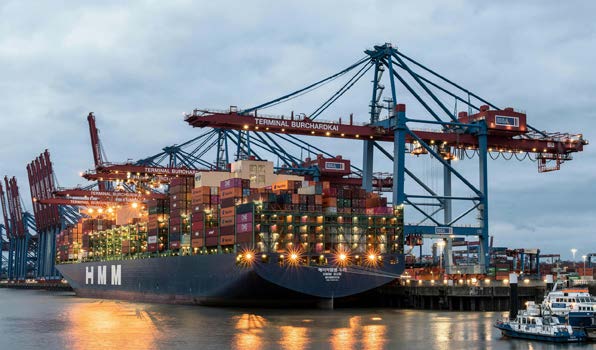- Perspective – August 2025
- NDE Advert
- GPS Round Up
- Sassda News : Sixty Minutes with Stainless Webinar: Full Report
- Sassda News : Tariffs with a Purpose
- EMV Africa Advert
- State of the Stainless Steel Nation
- Focus Feature
- Professional Profile – Craig Bateman
- Technical Case Study – Stainless Steel in Hydrometallurgy
- Member News – Astra Industrial Innovations
- Member News – African Sinks
- Market Intelligence – North Africa Rising
- Sassda News
- Member News
Sassda Sets a Balanced Course on Stainless Steel Imports

As South Africa’s stainless steel industry navigates a volatile global trade landscape, Sassda has emerged with a pragmatic, member-driven approach to tariffs and trade protection. Based on insights from its 2025 member survey, Sassda is taking a firm but measured stance: blanket import duties are not the answer but targeted protection against dumped or inferior products is not just necessary, it’s overdue.
The survey revealed a clear direction from across the stainless steel value chain: most members are opposed to general import tariffs on stainless steel goods. However, there’s strong support for protective tariffs against products that are dumped, subsidised, or fail to meet quality standards, especially when these pose a threat to local jobs and manufacturing capacity.
Sassda Executive Director Michel Basson reports, “It is apparent from the 2025 member survey that the majority of Sassda members are against import tariffs on imported stainless steel products. On the other hand, members do support the principle of tariffs against countries of origin of subsidised, dumped or inferior products.”
This clear mandate is shaping Sassda’s next steps. “With this direction received from the membership, Sassda will now look at mechanisms to protect the local industry where it is required,” says Basson. These mechanisms are aimed not only at shielding major producers and distributors,
but also safeguarding the downstream players such as fabricators, component makers, and end-users, who are equally exposed to the damage caused by unfair imports.
Targeted Protection, Not Blanket Barriers
In practice, this approach will see Sassda working hand-inhand with government agencies such as the Department of Trade, Industry and Competition (dtic), the International Trade Administration Commission (ITAC), and other industry organisations including SAISI, the Consumer Goods Council of South Africa, and the Manufacturing Circle.
One of the most direct tools available is the application for import duties on products where obvious dumping is taking place. South African Revenue Service (SARS) data already provides a foundation for this, enabling Sassda to track import volumes, declared customs values, and countries of origin. From this, unit values can be calculated and compared against known local benchmarks.
Basson cites the example of Austenitic stainles steel. “In South Africa, the base cost to fabricators sits around R75/kg.
After basic conversion, whether pipe, tube, sheet or profile, the cost typically climbs to R130/kg or more, even before welding, forming or surface treatment. When fully finished imported stainless steel goods arrive in the country priced below even the raw material input cost, it raises a red flag.
Such instances indicate probable contraventions of World Trade Organisation rules, opening the door to justified tariff applications.”
Cracks in the Code
However, identifying these imports isn’t always straightforward. The issue often lies in the Harmonised System (HS) code classification. South Africa uses an 8-digit system to categorise goods, but this level of detail can be insufficient, especially when trying to distinguish between material grades in stainless steel.
Without precise HS codes, imports can slip through untracked, making it harder to detect harmful trade patterns. Sassda is now actively working with the dtic and industry members to refine these classifications. The goal: to designate specific stainless steel products for better import tracking and, where needed, tariff protection.
Semi-Finished Complexity
While primary product and finished goods are more easily monitored, the grey area of semi-finished imports adds complexity. Consider the example of pressure vessel fabrication. Some components might be available locally, while others, like specialised spherical dish ends, might not be. In these cases, applying a one-size-fits-all tariff policy risks harming local manufacturers by denying them critical inputs.
This is where Sassda’s role as an industry connector becomes vital. Only an association that has a deep, realtime understanding of its sector can advise government accurately. Sassda collects, collates and analyses data across the value chain, ensuring that trade measures reflect reality on the ground, not just policy intent.
As Basson notes, industry associations must speak for the entire value chain. “The impact of tariffs and other trade measures will be felt differently at different levels. A holistic view ensures that any trade barriers are applied with the wellbeing and sustainability of the complete industry at
heart.”
Listening First, Acting Wisely
The events of 2025 have underscored the importance of inclusive, data-driven representation. Sassda has learned to listen first, engage widely, and only act when a sustainable outcome can be ensured. Moving forward, the association remains committed to its core mission: promoting the growth of a robust local stainless steel industry focused on conversion tonnage and job creation within the South African economy.
As global trade pressures mount, Sassda’s balanced, transparent approach offers a model for how sector-focused trade policy can be smart, responsive, and ultimately, fair.

